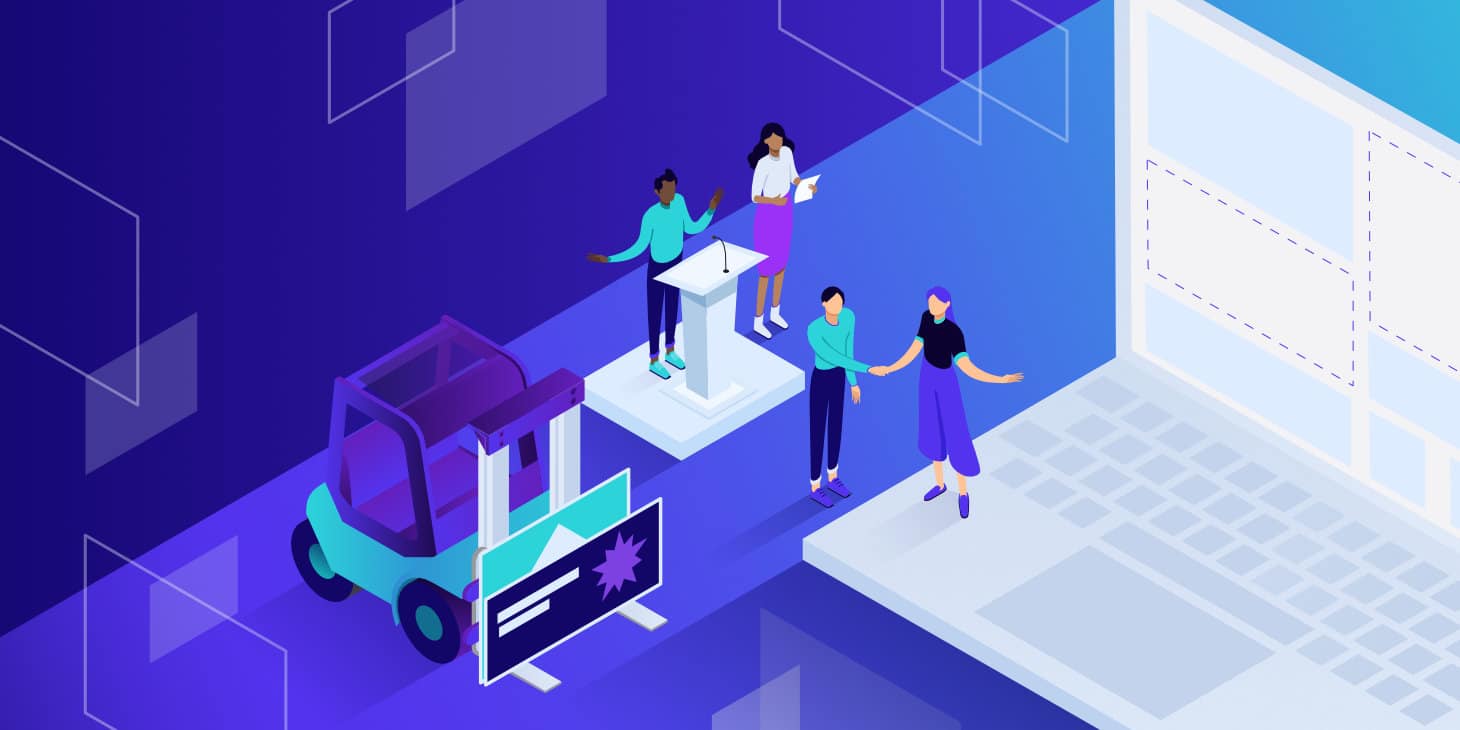API profitability and security strategies are transforming how developers approach application programming interfaces in 2025, shifting from viewing APIs as mere technical connectors to recognizing them as powerful revenue-generating products that demand both robust protection and strategic monetization frameworks. With 65% of organizations now generating direct revenue from their APIs and the API management market projected to reach $32.77 billion by 2032, developers who master the intersection of security and profitability position themselves to capture unprecedented opportunities in the modern digital economy.
This comprehensive guide reveals how to architect, secure, and monetize RESTful APIs using proven frameworks that blend hacker-tested security practices with profitable business models, enabling developers to transform technical expertise into sustainable business success.
The API Economy Revolution: Why Security and Profitability Are Inseparable
The modern API landscape has undergone a dramatic transformation. APIs now account for 62% of all internet traffic, with 83% of public APIs using REST architecture. More significantly, 92% of Fortune 1000 companies have REST APIs in production, and 62% report that their APIs directly generate revenue as analysed by Broos.io an API provider. This explosive growth creates both massive opportunity and substantial risk.
The security dimension is equally compelling and concerning. A staggering 95% of organizations experienced API security issues in production environments, with 60% reporting actual security breaches. Yet despite this alarming statistic, only 11% have extensive API security programs in place. This security gap creates a critical vulnerability: APIs are now attacked 68% more often than traditional web applications, with APIs facing 1600% more distributed denial-of-service traffic.
Understanding why security and profitability are inseparable requires recognizing three fundamental truths about the API economy. First, trust enables monetization—customers and partners will only pay for and integrate with APIs they trust to protect their data and maintain reliability. Second, security breaches destroy revenue streams overnight through reputational damage, customer churn, and regulatory penalties that can eliminate years of revenue growth. Third, robust security actually becomes a competitive advantage and monetization multiplier, enabling premium pricing, enterprise customer acquisition, and partnership opportunities unavailable to less secure alternatives.
The market data validates this connection. Organizations with advanced API management processes experience 47% better business results than those with basic management. Furthermore, API-first companies demonstrate 2.3x faster time-to-market and 12% higher market capitalization compared to peers. Developers who build APIs with integrated security and monetization strategies from day one position themselves to capture disproportionate value in this rapidly expanding market.
The API Revenue Stack: Three Layers from Foundation to Profit
Successful API businesses follow a systematic architecture that progresses through three distinct layers, each building on the previous to create sustainable revenue generation. This framework—the API Revenue Stack—provides a blueprint for transforming technical capabilities into profitable products.
Layer 1: Technical Foundation and Architecture Excellence
The foundation layer establishes the technical infrastructure that enables both security and monetization. RESTful API design follows six core architectural principles that create the flexibility required for business growth.
Statelessness ensures each request contains all necessary information for processing, eliminating server-side session management that creates security vulnerabilities and scaling limitations. Stateless architecture enables horizontal scaling to handle revenue growth without proportional infrastructure cost increases. This translates directly to profitability—each additional customer generates marginal revenue far exceeding marginal costs.
Client-server separation decouples user interface from backend logic, allowing independent evolution of both components. This architectural decision enables simultaneous development of multiple client applications, API versioning without breaking existing integrations, and technology stack flexibility that reduces long-term technical debt. From a business perspective, client-server separation accelerates time-to-market for new features and reduces customer churn caused by forced migrations.
Uniform interface standardization simplifies integration for API consumers, dramatically reducing adoption friction that kills monetization potential. APIs following consistent resource naming, HTTP method usage, and response formatting patterns see 40% faster developer adoption and 25% lower support costs compared to inconsistent designs. This uniformity also enables API gateways and management platforms to provide sophisticated monitoring, security, and billing capabilities essential for monetization.
The technical foundation must also address performance and reliability from day one. Organizations measuring API uptime report average availability of 99.46%, but leaders achieve 99.9%+ uptime through architectural decisions including caching strategies that reduce backend load by 60-80%, layered system architectures distributing load across multiple servers, and rate limiting preventing resource exhaustion from both legitimate high-volume users and malicious actors.
Layer 2: Security Architecture as Revenue Enabler
The security layer transforms protection from cost center to revenue enabler by building trust that unlocks premium pricing, enterprise customers, and partnership opportunities. Understanding API vulnerabilities from a hacker perspective reveals how to architect security that actually generates business value.
Authentication and authorization architecture forms the foundation of monetizable security. OAuth 2.0 with JSON Web Tokens provides industry-standard authentication that enterprise customers require for procurement approval, enables usage tracking essential for consumption-based pricing models, and supports multi-tenant isolation that allows SaaS business models.
Implementation requires sophisticated approaches beyond basic API keys. Mutual TLS authentication validates both client and server identities, preventing man-in-the-middle attacks that destroy customer trust. Token binding enforces sender-constrained access, eliminating token replay vulnerabilities that enable attackers to impersonate legitimate users and steal data or services. Role-based access control implements principle of least privilege, ensuring access tokens carry only narrowest necessary scopes for operations—this granularity enables tiered pricing models where customers pay more for broader access.
Input validation and sanitization prevents injection attacks that represent the most common API vulnerability class. Attackers exploit insufficient validation to execute SQL injection extracting entire databases, NoSQL injection bypassing authentication, and cross-site scripting manipulating client applications. Beyond obvious security benefits, robust input validation enables confident data handling that supports data monetization strategies—customers pay premium prices for high-quality, validated data accessible through well-protected APIs.
Validation implementation combines whitelisting approaches accepting only expected input formats, JSON schema validation enforcing structure and data types, parameterized queries preventing injection regardless of input content, and security libraries providing battle-tested validation implementations.
Rate limiting and abuse prevention protects infrastructure while enabling usage-based monetization models. Rate limiting prevents denial-of-service attacks that destroy availability and revenue, enables differential pricing where higher tiers receive higher rate limits, creates conversion pressure moving free tier users to paid tiers, and provides abuse signals identifying fraudulent usage.
Advanced rate limiting architectures implement per-user, per-IP, and per-endpoint limits preventing localized abuse, burst allowances accommodating legitimate usage spikes, graduated throttling providing warnings before hard blocks, and dynamic adjustment responding to real-time threat intelligence.
Layer 3: Monetization Models and Revenue Optimization
The monetization layer converts API usage into sustainable revenue through carefully designed business models aligned with customer value delivery. Understanding the five primary API monetization models enables strategic selection based on use case, customer base, and competitive positioning.
Pay-per-use pricing charges customers for each API call, creating direct alignment between cost and value. This model works exceptionally well for APIs delivering clear per-request value like payment processing, SMS/voice communications, and data enrichment services. Cloud providers including AWS and Google Cloud Platform demonstrate pay-per-use success, with metering systems tracking billions of API calls daily and generating automatic billing.
Implementation requires robust usage tracking capturing every API call with relevant metadata, real-time metering preventing usage fraud, idempotency handling ensuring customers aren’t charged for retry requests, and tiered pricing where per-unit costs decrease at volume thresholds creating customer retention.
Subscription-based pricing offers predictable monthly or annual access to APIs, providing revenue stability for providers and cost predictability for customers. This model succeeds for APIs delivering consistent ongoing value like weather data, financial market data, and collaboration tools. Subscription architectures typically implement tiered plans with basic, professional, and enterprise levels differentiated by rate limits, feature access, support levels, and SLA guarantees.
Freemium models provide free basic access up to usage thresholds, converting users to paid tiers when they exceed limits or need advanced features. This approach dominates developer-focused APIs where rapid adoption matters more than immediate revenue. Successful freemium implementations carefully balance generous free tiers encouraging experimentation against clear value propositions for paid conversion.
The conversion economics matter enormously. APIs converting just 3-5% of free users to paid subscriptions can build sustainable businesses if free tier costs remain low through efficient architecture and resource management. Leading freemium APIs like Stripe and Mapbox demonstrate this model’s potential, serving millions of free tier developers while generating hundreds of millions in revenue from paying customers.
Transaction-based and revenue sharing models charge percentages of business transacted through APIs, aligning API provider success with customer success. Payment processing APIs, marketplace APIs, and affiliate platforms use this approach where one API call can span multiple backend transactions. Revenue sharing requires sophisticated tracking of transaction outcomes, automated revenue calculation and distribution, transparent reporting building partner trust, and fraud prevention ensuring revenue accuracy.
Partner and internal value creation recognizes that not all API value flows through direct payment. Internal APIs save costs by enabling code reuse, reducing duplicate development, and accelerating innovation through standardized integration patterns. Partner APIs open distribution channels, create ecosystem effects, and enable business models impossible for single companies alone.
The Security-to-Profit Pipeline: Converting Protection Into Revenue
Traditional security thinking treats protection as cost center—necessary spending that doesn’t generate revenue. The security-to-profit pipeline framework inverts this mindset, showing how each security investment creates monetization opportunities unavailable to less secure alternatives.
Enterprise customer acquisition depends entirely on security maturity. Enterprise procurement teams require security attestations including SOC 2 compliance, penetration testing results, OAuth 2.0 support, and comprehensive security documentation before purchasing decisions. Meeting these requirements unlocks customer segments willing to pay 3-5x more than small business customers, generating average contract values of $50,000-500,000 annually versus $500-5,000 for SMB customers.
The ROI calculation is straightforward. Implementing SOC 2 compliance costs $50,000-150,000 initially plus $20,000-50,000 annually for ongoing audits. However, even acquiring just three enterprise customers at $100,000 average contract value generates $300,000 annual revenue, providing 2:1 to 6:1 first-year return and dramatically higher returns in subsequent years.
Premium pricing and competitive differentiation flows from security excellence. APIs demonstrating superior security through third-party audits, bug bounty programs, and transparent security practices command 20-40% price premiums over functionally similar but less secure alternatives. This premium pricing compounds over customer lifetime—a 30% price premium on a customer paying $1,000 monthly for five years generates $18,000 additional revenue per customer, or $180,000 across ten customers.
Security becomes marketing differentiation in crowded markets. When competitors suffer breaches, secure APIs capture displaced customers and market share. Data shows API providers maintaining zero breaches for 3+ years grow revenue 45% faster than industry averages, while providers suffering breaches see average 28% revenue decline in the subsequent year.
Partnership and integration opportunities require security baselines that enable trust. Major platforms including Salesforce, Stripe, and AWS maintain partner API marketplaces requiring security certifications for listing. Inclusion in these marketplaces provides distribution reaching millions of potential customers without marketing spend.
Integration certifications create similar dynamics. Becoming a certified integration partner for major CRM, marketing automation, or enterprise resource planning systems requires passing security audits. These certifications unlock co-marketing opportunities, preferred vendor status, and revenue sharing programs generating passive income streams.
Developer-to-Entrepreneur Transformation: From Code to Commerce

Most developers possess technical skills to build excellent APIs but lack business frameworks to monetize them profitably. The developer-to-entrepreneur transformation requires systematic progression through four capability stages.
Stage 1: Technical Competence establishes ability to build functional APIs following REST principles, implement basic CRUD operations, structure endpoints logically, handle errors gracefully, and document APIs clearly. This stage typically requires 6-12 months of focused API development experience. Developers at this stage can build side projects and contribute to open source but lack monetization capability.
Stage 2: Production Readiness advances technical skills to production-grade requirements including security implementation with OAuth 2.0 authentication, performance optimization achieving sub-200ms response times, reliability engineering maintaining 99.9%+ uptime, monitoring and observability providing complete visibility, and DevOps automation enabling continuous deployment.
Production readiness typically requires 12-24 months beyond basic competence and marks the threshold where developers can support paying customers. APIs at this maturity generate $0-$5,000 monthly revenue from early adopter customers willing to accept some rough edges.
Stage 3: Business Integration combines technical capability with business acumen including selecting appropriate monetization models, implementing usage metering and billing, creating developer documentation and onboarding, providing technical support at scale, and measuring key business metrics.
Business integration requires 6-12 months of intentional focus and enables scaling to $5,000-$50,000 monthly revenue. Developers at this stage transition from hobbyists to entrepreneurs with sustainable businesses.
Stage 4: Market Leadership achieves competitive differentiation through advanced API management platform integration, sophisticated pricing strategies, enterprise sales capabilities, partner ecosystem development, and continuous innovation.
Market leaders generate $50,000+ monthly revenue and command premium valuations for acquisition or investment. Reaching this stage typically requires 3-5 years total journey from initial API development.
Practical Implementation: Your 90-Day API Business Launch
Transforming API knowledge into revenue requires systematic execution. This 90-day framework provides actionable steps launching profitable API businesses from zero.
Days 1-30: Foundation and Validation begins with market research identifying underserved developer needs, validating willingness to pay through interviews, analyzing competitor offerings and pricing, and defining minimum viable product scope. Simultaneously, implement core technical infrastructure including RESTful API framework selection, authentication system setup, database architecture design, and basic documentation creation.
Days 31-60: Security and Functionality advances to production-grade implementation including OAuth 2.0 authentication deployment, HTTPS/TLS encryption configuration, input validation and rate limiting, comprehensive error handling, and monitoring system integration. Parallel development continues on core functionality delivering validated customer value.
Days 61-90: Monetization and Launch implements business systems including pricing tier design, billing integration using Stripe or similar, developer portal creation, documentation completion, and initial marketing and outreach.
This timeline assumes part-time development alongside full-time employment. Full-time development can compress timelines by 40-50%, while more complex APIs may require extended development.
Conclusion: The API Opportunity of 2026 and Beyond
API profitability and security strategies converge to create unprecedented opportunity for developers willing to think like entrepreneurs. The market fundamentals are compelling: $32.77 billion total addressable market growing at 25% annually, 65% of organizations generating revenue from APIs, and severe shortage of secure, well-architected, properly monetized APIs creating white space for new entrants.
The competitive dynamics favor developers who master the full stack from security through monetization. While 95% of organizations experience API security issues, only 11% have comprehensive programs—this gap creates opportunities for security-first APIs commanding premium pricing. Similarly, while 74% of organizations adopt API-first approaches, most lack monetization sophistication, leaving enormous value on the table that strategic developers can capture.
The technical barriers to entry have never been lower. Cloud infrastructure, API gateway platforms, authentication services, and billing systems provide off-the-shelf components accelerating development. What separates successful API entrepreneurs from hobbyists isn’t technical capability—it’s strategic integration of security and monetization from day one.
Developers starting API businesses today enter a market poised for explosive growth where APIs now drive 62% of internet traffic and represent strategic assets for nearly every organization. Those who build secure, well-architected, strategically monetized APIs position themselves to capture outsized returns as the API economy continues its dramatic expansion through 2025 and beyond.
Broos.link delivers cutting-edge technology intelligence, developer resources, and digital business frameworks for Africa’s tech community. As part of the Broos Action ecosystem, we provide actionable insights that empower developers and entrepreneurs to build successful API businesses, implement robust security practices, and navigate the evolving digital economy. Whether you’re launching your first API, scaling a developer platform, or exploring API monetization strategies, Broos.link offers the knowledge and tools to succeed in modern software development.









Leave a Reply